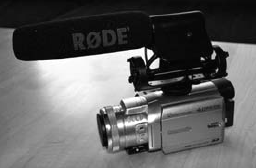After reading Brigg’s Chapter on “Telling Stories With Videos”, it struck me at how innovative and important videos have become in delivering people news and information.

While reading the chapter, several main points stuck out in my mind.
- Be selective in shooting. There are two good reasons for this: You don’t want to waste tape and you don’t want to waste time editing.
- Avoid panning, zooming. Stop recording when switching between wide, medium and close shots. Avoid zooming and panning if possible. Simply shoot a shot, stop recording, then adjust for the next shot and hit record again.
- Hold your shots. Since you can make a shot shorter in the editing process—but not longer—make sure to hold each of your shots for at least 15 seconds. Even if it’s a wide environment shot that you’ll likely use for 5 seconds, shoot the full 15 seconds. You’ll be glad you did.
- Be silent when you shoot. The camera will pick up every sound you make—a sigh, a cough, a chuckle or anything you say. So keep your lips zipped when recording because you won’t be able to edit out the unwanted audio later.
- Frame your subject carefully. When framing your shot, it is best to avoid a static composition by keeping the main subject slightly off center. To do this consistently, follow the “rule of thirds,” which recommends dividing the frame, using imaginary lines, into thirds both horizontally and vertically. If you position your main subject (usually a face) near one of the intersections of these lines, you will achieve a pleasant, active composition.
- Seek the best short clips. Understand that the best video stories are comprised of many short clips edited together, and your job is to get the best short clips. The best way to fully comprehend the array of clips you need to capture is to actually perform the editing—or at a minimum sit with the person who edits the video. It’s the only way to see what types of clips you shot work best and what types of clips you missed.
| Video to start one off… |

Digital video camer


No Comments so far ↓
There are no comments yet...Kick things off by filling out the form below.